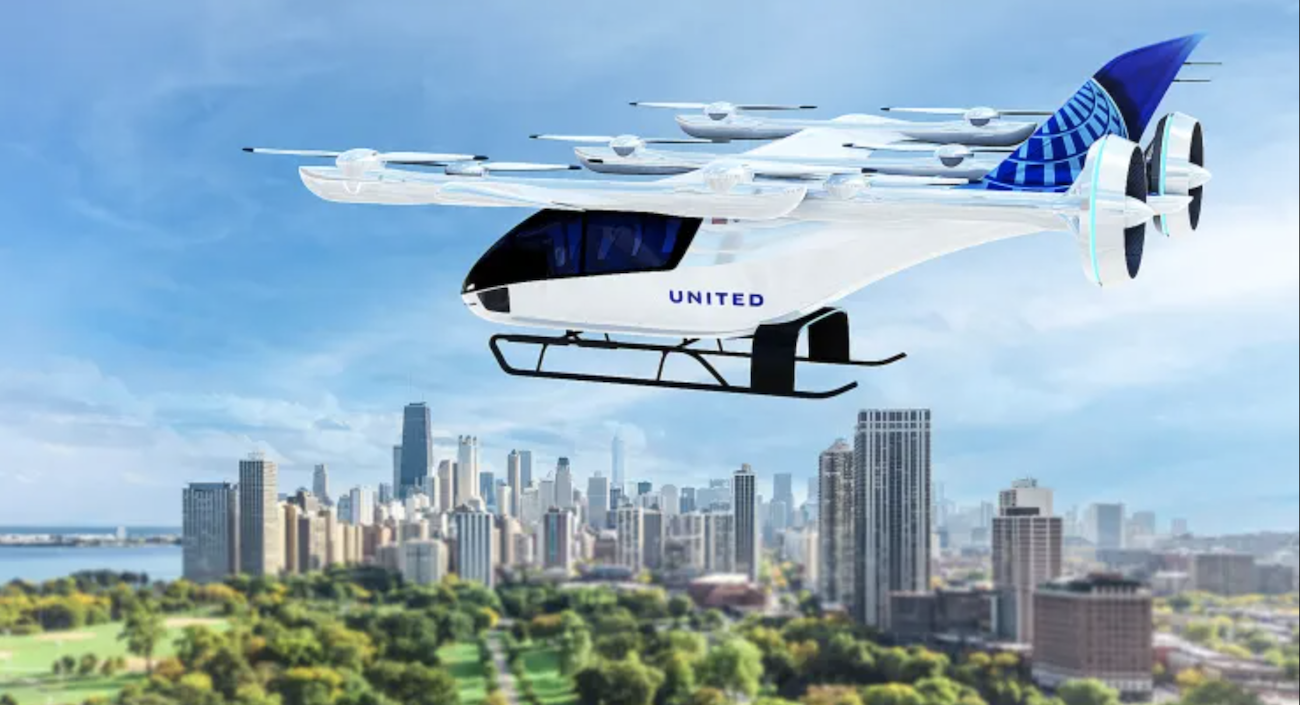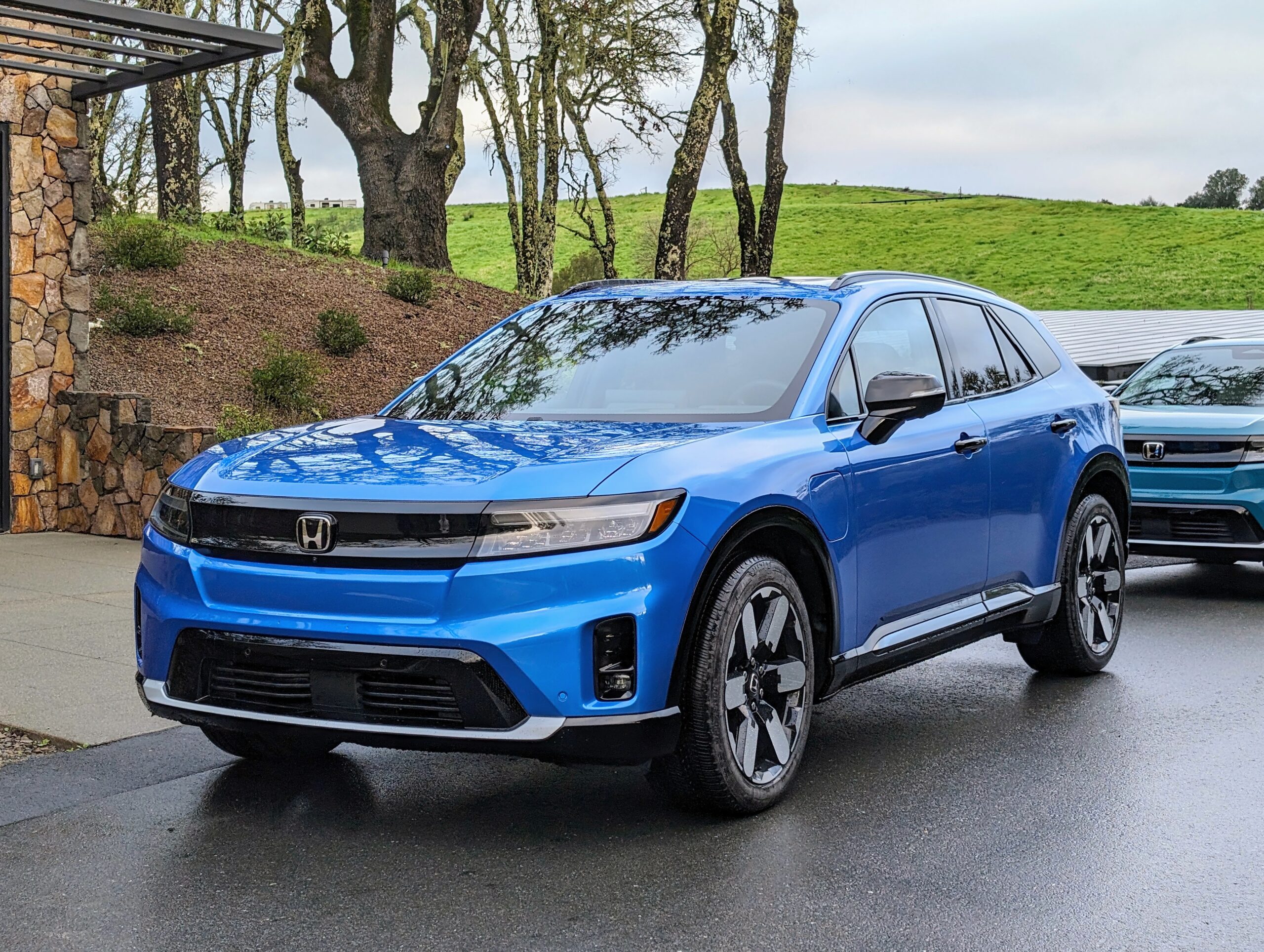
There are some dreams that just never seem to end. People sick of commuting imagine all sorts of new transportation schemes while stuck in traffic. Elon Musk dreamed up the Hyperloop while trying to get to LAX during rush hour. One of the most popular fantasies is an electric air taxi that rises above it all and whisks you to your destination while looking down on all those people crawling through traffic down below.
United Airlines said recently that it plans to begin electric air taxi service from San Francisco airport to various destinations in the Bay Area in 2026. The company will use aircraft manufactured by Eve Air Mobility. Last year, United said it was investing $15 million in the Florida-based company and plans to buy 200 electric VTOL (vertical takeoff and landing) aircraft from it, with an option for 200 more. San Francisco International would be the third United hub where it plans to offer electric air taxi service, although it hasn’t yet said where in the Bay Area the vehicles would fly or how much a trip might cost.
“Our shared goal is to provide residents and visitors to the San Francisco Bay area with efficient and cost-competitive transportation in one of the most densely populated urban areas in the U.S.,” said Eve Air Mobility CEO Andre Stein. The electric air taxis have a range of up to 60 miles. “The aircraft features a lift + cruise configuration with dedicated rotors for vertical flight and fixed wings to fly on cruise, with no components required to change position during flight,” the company said.

Image courtesy of United Airlines.
According to SF Gate, Eve Air Mobility is one of two eVTOL companies United has invested in. The other is Santa Clara-based Archer Aviation. United has already announced two eVTOL routes using aircraft from Archer. One would fly from O’Hare Airport to Vertiport Chicago, which is located downtown in the Illinois Medical District near the Loop. The other would fly from Newark Airport to the Downtown Manhattan Heliport in the Financial District near Battery Park. Both services are expected to begin in 2025.
Archer Aviation says its mission is “to unlock the skies, freeing us to reimagine how we live and spend time.” It expects to manufacture 6000 of its electric air taxi devices by 2030 but it won’t actually be manufacturing them itself. That task will fall to Stellantis. which will construct a new factory in Georgia where the Archer Midnight will be assembled.
At the Paris Air Show last week, Carlos Tavares, chief executive of Stellantis, said his company has taken an interest in Archer Aviation because “first, it’s fun,” but also because it would prevent customers from being “victim of a three hour traffic jam.” Stellantis has the manufacturing experience Archer will need to manufacture its air taxis. If the production rate gets to 650 a year, that will make it the world’s largest aircraft producer in terms of units made. Boeing only expects to produce 42,600 airplanes over the next 20 years.
Wings Or No Wings
According to The Guardian, there are two distinct kinds of air taxi products. One has no wings and uses horizontally-mounted rotors to keep the unit aloft. The absence of wings means the rotors have to do all the work of keeping the air taxi aloft, which requires a lot of energy. Therefore, these types of aircraft tend to have a fairly limited range — on the order of 35 kilometers.
The other type of aircraft — such as those coming from Eve and Archer — have wings that help keep them in the air. That means the rotors have to do less work and therefore their range is longer — 100 kilometers or more.
Electric Air Taxi Cost
There are already helicopters available for well-heeled commuters, but they are far from inexpensive. An electric air taxi has many of the same advantages as an electric car — lower cost of fuel and greatly reduced maintenance. The result, says Eve CEO Andre Stein, is that trips in an electric air taxi are expected to cost about $3.00 per kilometer. Would you pay $30 to fly over the traffic rather than drive through it? Don’t be silly. Of course you would. And if that was all there was to it, everyone would want to use these services (assuming they get FAA approval and enough funding to actually start production, neither of which is guaranteed).
There are dozens of startups that want to make it into the air taxi space. “Not necessarily everyone” will make it through, said Stein. “Not everybody will go through [the] certification process. It is very challenging for everybody. So I don’t think all of the players will go through — but a few will.”
The Takeaway
Unlocking the skies is all well and good, but getting to the airport in San Francisco, Chicago, or Newark is no walk in the park. The traffic to get to all of them is just as daunting as fighting traffic into the city. Then you have to find a place to park (which is not inexpensive), take a shuttle to the terminal, walk to where the air taxi is waiting, then find transportation at the other end to take you to your destination.
The dream is that you open an app, an air taxi lands on your front lawn, and whisks you directly to wherever it is you want to go. The reality is quite a bit different. One has to wonder just how much time and money these services will actually save. They may work well for people arriving at the designated airports and needed a quick hop into the city, but it is unlikely a resident of Punxsutawney, Pennsylvania, would dash to Newark to catch an air taxi to New York City. All the hyperventilating about the wonders of air taxi service (which could be related to certain glitzy Popular Mechanics covers from the 1950s) may be a bit overblown at the present time.
Then there is the possibility all that traffic down below just gets transferred to a corridor in the sky. Cars can operate within a few feet of other cars on the road. The same is not true of aircraft. Maintaining a safe separation horizontally and vertically between a flotilla of air taxis could quickly use up most of the available airspace over busy cities. Don’t forget, there are lots of conventional airplanes flying in and out of those airports, too.
Will air taxis become a viable business or are they just a Utopian dream? Untied, Airbus, Embrear, Boeing, Eve, Archer, and a host of other companies think there’s money to be made in the air taxi business. “We’ll see,” said the Zen Master.
Sign up for daily news updates from CleanTechnica on email. Or follow us on Google News!
Have a tip for CleanTechnica, want to advertise, or want to suggest a guest for our CleanTech Talk podcast? Contact us here.
Former Tesla Battery Expert Leading Lyten Into New Lithium-Sulfur Battery Era — Podcast:
I don’t like paywalls. You don’t like paywalls. Who likes paywalls? Here at CleanTechnica, we implemented a limited paywall for a while, but it always felt wrong — and it was always tough to decide what we should put behind there. In theory, your most exclusive and best content goes behind a paywall. But then fewer people read it! We just don’t like paywalls, and so we’ve decided to ditch ours. Unfortunately, the media business is still a tough, cut-throat business with tiny margins. It’s a never-ending Olympic challenge to stay above water or even perhaps — gasp — grow. So …




